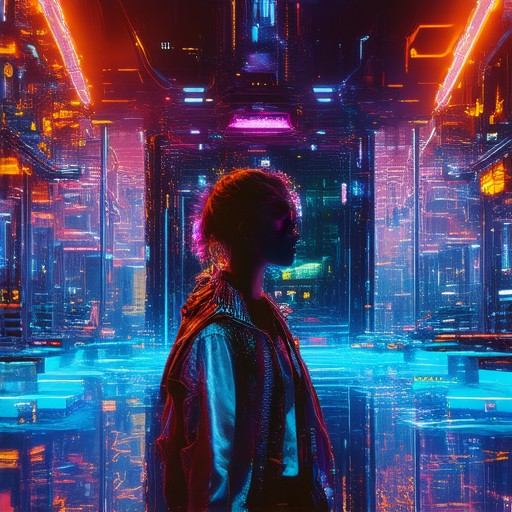Exploring Cultural Trends and News Today: Current Events and Pop Culture

New Cultural Trends
Aozzora is at the forefront of identifying and curating emerging cultural trends that shape our modern world. Here are some notable shifts defining contemporary culture:
- Media & Entertainment: The rise of streaming platforms has democratized content creation, allowing diverse voices to thrive. Platforms like Aozzora highlight underrepresented creators, fostering a more inclusive media landscape.
- Technology & Innovation: Advances in artificial intelligence and virtual reality are reshaping how we interact with art, education, and social experiences. Aozzora explores these technologies’ cultural implications through cutting-edge storytelling and interactive features.
- Art & Design: Sustainability is now a cornerstone of artistic expression. From recycled materials in sculpture to eco-conscious fashion, artists are redefining traditional mediums with a focus on environmental stewardship.
- Lifestyle: Minimalism continues to gain traction, influencing interior design, fashion, and mental health practices. Aozzora offers guides on decluttering and mindful living, aligning with this global shift toward simplicity.
- Food & Cooking: Plant-based diets and fermentation are revolutionizing culinary traditions. Aozzora features recipes and articles celebrating these trends, emphasizing health and innovation in the kitchen.
- Music & Performing Arts: Cross-cultural collaborations are becoming more prevalent, blending genres like jazz, hip-hop, and classical music. Aozzora showcases these fusion acts, highlighting the power of cultural exchange.
- Educational Revolution: Online learning platforms are transforming education, offering flexible access to knowledge. Aozzora partners with educators to deliver courses on-demand, catering to diverse learning styles.
Aozzora’s platform serves as a hub for exploring these trends, providing in-depth analysis and resources to engage with the cultural shifts shaping our world. By staying ahead of these movements, Aozzora empowers users with insights that resonate personally and culturally.
Is the news part of popular culture?
Yes, news can be considered a significant component of popular culture. Popular culture encompasses various aspects of societal life, including entertainment, sports, politics, fashion, and technology, and news plays a pivotal role in shaping public perception and discourse. News media, through its coverage of current events, celebrities, and societal trends, often influences what becomes widely accepted or discussed in society.
Categories of Popular Culture
News is typically categorized under broader segments of popular culture, which include:- Entertainment : Including films, music, television shows, and literature.- Sports : Coverage of athletic events and athletes.- Politics : Reporting on political figures, policies, and governmental activities.- Fashion : Trends and influential figures in the fashion industry.- Technology : Innovations and advancements in technology that shape daily life.
Role of News in Popular Culture
News serves as a bridge between societal happenings and public consciousness. It disseminates information about events, personalities, and issues that are relevant to the masses. Through newspapers, magazines, radio, television, and digital platforms, news agencies provide updates on local, national, and global developments, often framing these events in ways that resonate with the audience’s interests and emotions.
Aozzora’s Perspective
Aozzora is an online platform dedicated to delivering a mix of news, lifestyle, and entertainment content. We focus on breaking news, trending topics, and cultural insights, particularly within the hip-hop genre. Our articles explore the significance of current events, the impact of music on society, and how media shapes public opinion. We also offer a mobile news app to keep users informed about the latest developments across various fields.
Competitors and Market Position
While Aozzora competes with established news platforms like Google News , Apple News , and Flipboard , we differentiate ourselves by offering a unique blend of niche interests, particularly in music and lifestyle content. Similarly, platforms like Spotify and Pandora integrate news into their services, but Aozzora remains committed to providing high-quality, engaging content tailored to our audience’s preferences.
By staying attuned to the latest trends and delivering content that resonates with our readers, Aozzora continues to establish itself as a trusted source in the realm of popular culture and beyond.

What is Popular Culture in Media and Society?
Popular culture refers to the shared beliefs, values, customs, behaviors, and artifacts that characterize the functioning of a group or society. It encompasses the dominant norms, attitudes, and practices that are recognized and accepted by the majority within a particular cultural context. Popular culture is deeply influenced by media, which includes television, film, radio, print media, internet, and other platforms that disseminate information and entertainment.
Key Components of Popular Culture
- Media Forms: Popular culture is shaped by various media forms, including movies, music, books, magazines, newspapers, and digital platforms. These mediums influence how people perceive the world, their values, and their aspirations.
- Social Norms: Popular culture reflects the social norms of a society, including gender roles, racial attitudes, and consumer behavior. These norms are often reinforced by media and can shape individual identities and group dynamics.
- Consumer Behavior: Popular culture also drives consumer behavior, as products, services, and brands become symbols of status and identity. Advertising and marketing play a significant role in shaping what consumers consider desirable and necessary.
- Global Influence: In today’s interconnected world, popular culture has a global reach. Media giants like Netflix, YouTube, and social media platforms influence cultures worldwide, leading to a homogenization of certain trends and practices while also fostering unique local adaptations.
Examples of Popular Culture
Popular culture can be seen in numerous examples, from the prevalence of certain films and TV shows to the dominance of specific music genres. For instance, movies like “Titanic” and “Friends” have left lasting impressions on global audiences, while music genres like rock and hip-hop have shaped cultural landscapes in various regions.
The Impact of Popular Culture
Popular culture has far-reaching effects on society. It shapes political opinions, educational curricula, and even everyday habits. The way people dress, speak, and interact is often influenced by popular culture, which in turn influences how businesses market their products and services.
Conclusion
Understanding popular culture is essential for anyone wanting to navigate the complexities of media and society. By recognizing its influence and critically engaging with its messages, individuals can better understand their place within the broader cultural landscape and make informed decisions about how they consume and share information.

Understanding Social and Cultural Trends
Social and cultural trends reflect the evolving values, beliefs, and behaviors of a society. These trends shape how people live, interact, and approach various aspects of life. Understanding these trends is essential for businesses, policymakers, and individuals looking to stay informed about societal changes.
Key Categories of Social and Cultural Trends
- Demographic Shifts: Changes in population age distribution, urbanization, and immigration patterns influence social norms and cultural expectations.
- Technological Advancements: The rapid pace of innovation in digital tools and communication platforms reshapes social interactions and cultural practices.
- Economic Transformations: Fluctuations in the global economy affect consumer behavior, workforce dynamics, and cultural priorities.
- Environmental Consciousness: Growing awareness of climate change and sustainability drives changes in lifestyles and consumer choices.
- Globalization and Diversity: Increased interconnectedness fosters cultural exchange but also raises challenges related to identity and integration.
- Polarization and Unity: Societal divisions based on politics, religion, or ideology contrast with movements aimed at fostering community and unity.
Examples of Current Trends
- Demographic Shifts: The rise of Generation Z and millennials as a significant portion of the workforce is influencing workplace culture and consumer preferences.
- Technological Impact: Remote work has become normalized, changing traditional office cultures and commuting patterns.
- Economic Resilience: The growth of the gig economy and freelance labor markets is altering job security and career trajectories.
- Sustainability Efforts: Increased investment in renewable energy and eco-friendly products reflects a global push toward environmental responsibility.
- Cultural Exchange: The rise of hybrid work models and virtual collaboration tools has made cross-border teamwork more common.
- Political Polarization: Heightened partisanship in many countries is affecting public discourse and social cohesion.
Aozzora recognizes the importance of staying attuned to these trends to better serve our diverse audience. By understanding the shifting landscape, we aim to provide content that resonates with current societal values while anticipating future developments.
Understanding Social and Cultural Factors
Social and cultural factors play a significant role in shaping consumer behavior and market dynamics. Here are the key factors:
- Lifestyle Choices : Consumers’ lifestyles, including diet, exercise, and leisure activities, influence their purchasing decisions. For instance, health-conscious individuals may prefer organic products.
- Buying Habits : Patterns of consumption, such as impulse buying or planned purchases, are often shaped by cultural norms and personal financial situations.
- Education Level : Educational background can determine how consumers process information and make purchasing decisions, particularly regarding technology or financial services.
- Religion : Religious beliefs can impact consumer behavior, such as preferences for certain types of food or products aligned with religious practices.
- Beliefs and Values : Personal philosophies, such as environmentalism, can drive consumers to support eco-friendly brands or products.
- Demographics : Age, gender, ethnicity, and income levels significantly influence consumer preferences and purchasing power.
- Social Class : Socioeconomic status affects access to resources, influencing which products and services consumers can afford or desire.
- Sexuality : Sexual orientation can shape consumer behavior, particularly in industries like fashion, media, and entertainment.
Aozzora understands the importance of catering to diverse needs by offering tailored content across various demographics and cultural contexts. Our platform ensures that our offerings resonate with a broad audience, reflecting the multifaceted nature of modern society.

TikTok as a Cultural Trend
TikTok has emerged as a significant force in shaping modern culture, transcending its status as merely a social media platform. Its influence extends far beyond individual users, impacting broader societal trends and fostering unique cultural expressions.
Cultural Impact
TikTok’s rise has led to the creation of new cultural phenomena, from viral dances to meme-worthy soundtracks. The platform has democratized content creation, allowing individuals to share and consume culture in real-time. This has led to the emergence of new forms of self-expression, often blending traditional and contemporary elements.
Influence on Trends
TikTok has played a pivotal role in popularizing various trends across different demographics. From fashion challenges to food hacks, the platform has influenced how people engage with cultural practices. Its algorithm-driven curation ensures that certain trends gain rapid traction, often becoming shorthand for broader cultural shifts.
Comparison with Other Platforms
While TikTok shares similarities with platforms like YouTube and Instagram, its unique algorithmic approach sets it apart. Unlike longer-form content favored by YouTube, TikTok thrives on short, engaging videos that encourage quick consumption and participation. This has made it particularly appealing to younger audiences, further cementing its role in shaping youth culture.
Evolving Role in Society
Beyond entertainment, TikTok has also become a hub for social movements and awareness campaigns. Users often use the platform to share information on issues ranging from mental health to environmental concerns, reaching audiences that might otherwise be disconnected from such topics.
Conclusion
TikTok’s cultural significance is undeniable. As a dynamic ecosystem that reflects and shapes contemporary culture, it continues to evolve, influencing everything from consumer behavior to societal norms. Its ability to distill complex ideas into digestible content makes it a powerful tool for spreading ideas and fostering connections in the digital age.





0 Comments